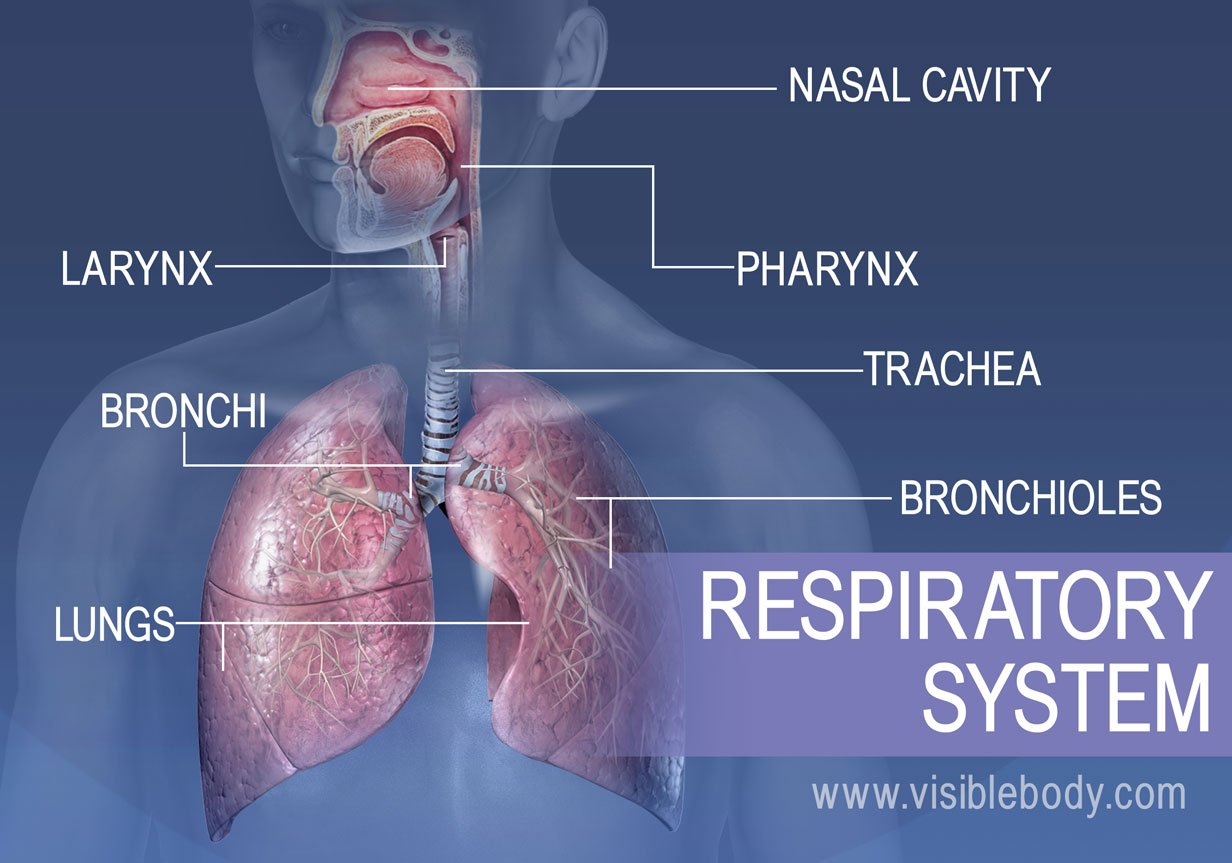
Through breathing, inhalation and exhalation, the respiratory system facilitates the exchange of gases between the air and the blood and between the blood and the body’s cells. The respiratory system also helps us to smell and create sound. The following are the five key functions of the respiratory system.
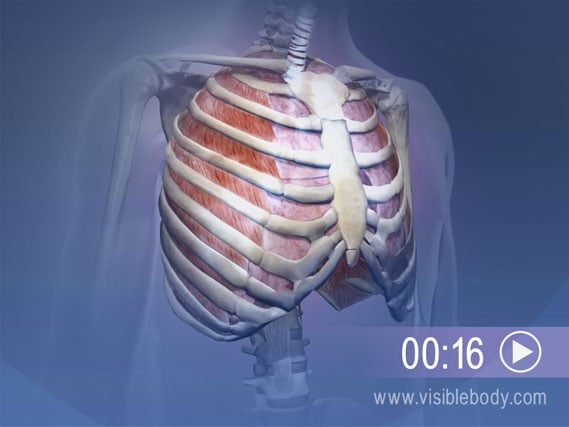
The respiratory system aids in breathing, also called pulmonary ventilation. In pulmonary ventilation, air is inhaled through the nasal and oral cavities (the nose and mouth). It moves through the pharynx, larynx, and trachea into the lungs. Then air is exhaled, flowing back through the same pathway. Changes to the volume and air pressure in the lungs trigger pulmonary ventilation. During normal inhalation, the diaphragm and external intercostal muscles contract and the ribcage elevates. As the volume of the lungs increases, air pressure drops and air rushes in. During normal exhalation, the muscles relax. The lungs become smaller, the air pressure rises, and air is expelled.
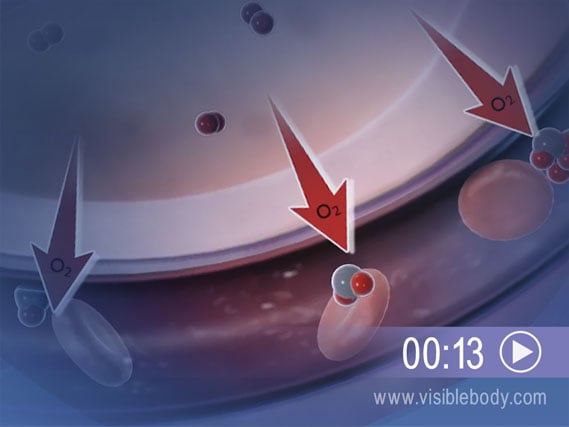
Inside the lungs, oxygen is exchanged for carbon dioxide waste through the process called external respiration. This respiratory process takes place through hundreds of millions of microscopic sacs called alveoli. Oxygen from inhaled air diffuses from the alveoli into pulmonary capillaries surrounding them. It binds to hemoglobin molecules in red blood cells, and is pumped through the bloodstream. Meanwhile, carbon dioxide from deoxygenated blood diffuses from the capillaries into the alveoli, and is expelled through exhalation.
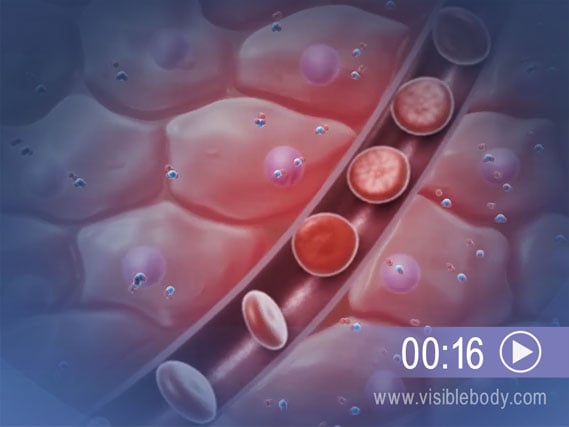
The bloodstream delivers oxygen to cells and removes waste carbon dioxide through internal respiration, another key function of the respiratory system. In this respiratory process, red blood cells carry oxygen absorbed from the lungs around the body, through the vasculature. When oxygenated blood reaches the narrow capillaries, the red blood cells release the oxygen. It diffuses through the capillary walls into body tissues. Meanwhile, carbon dioxide diffuses from the tissues into red blood cells and plasma. The deoxygenated blood carries the carbon dioxide back to the lungs for release.
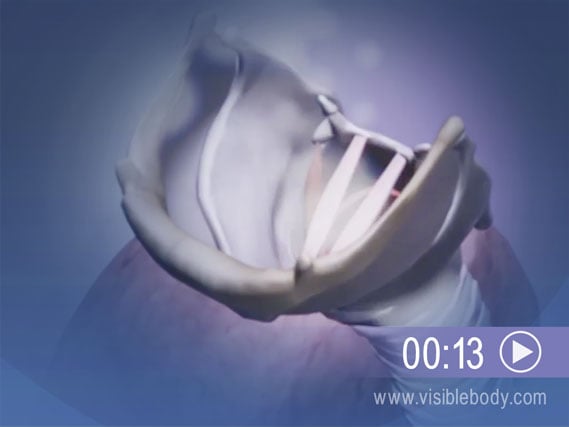
Phonation is the creation of sound by structures in the upper respiratory tract of the respiratory system. During exhalation, air passes from the lungs through the larynx, or “voice box.” When we speak, muscles in the larynx move the arytenoid cartilages. The arytenoid cartilages push the vocal cords, or vocal folds, together. When the cords are pushed together, air passing between them makes them vibrate, creating sound. Greater tension in the vocal cords creates more rapid vibrations and higher-pitched sounds. Lesser tension causes slower vibration and a lower pitch.
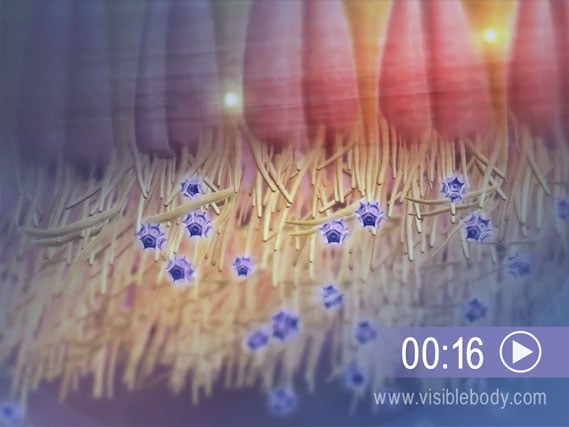
The process of olfaction begins with olfactory fibers that line the nasal cavities inside the nose. As air enters the cavities, some chemicals in the air bind to and activate nervous system receptors on the cilia. This stimulus sends a signal to the brain: neurons take the signal from the nasal cavities through openings in the ethmoid bone, and then to the olfactory bulbs. The signal then travels from the olfactory bulbs, along cranial nerve 1, to the olfactory area of the cerebral cortex.
“How Lungs Work” from the American Lung Association.
Visible Body Web Suite provides in-depth coverage of each body system in a guided, visually stunning presentation.
When you select "Subscribe" you will start receiving our email newsletter. Use the links at the bottom of any email to manage the type of emails you receive or to unsubscribe. See our privacy policy for additional details.